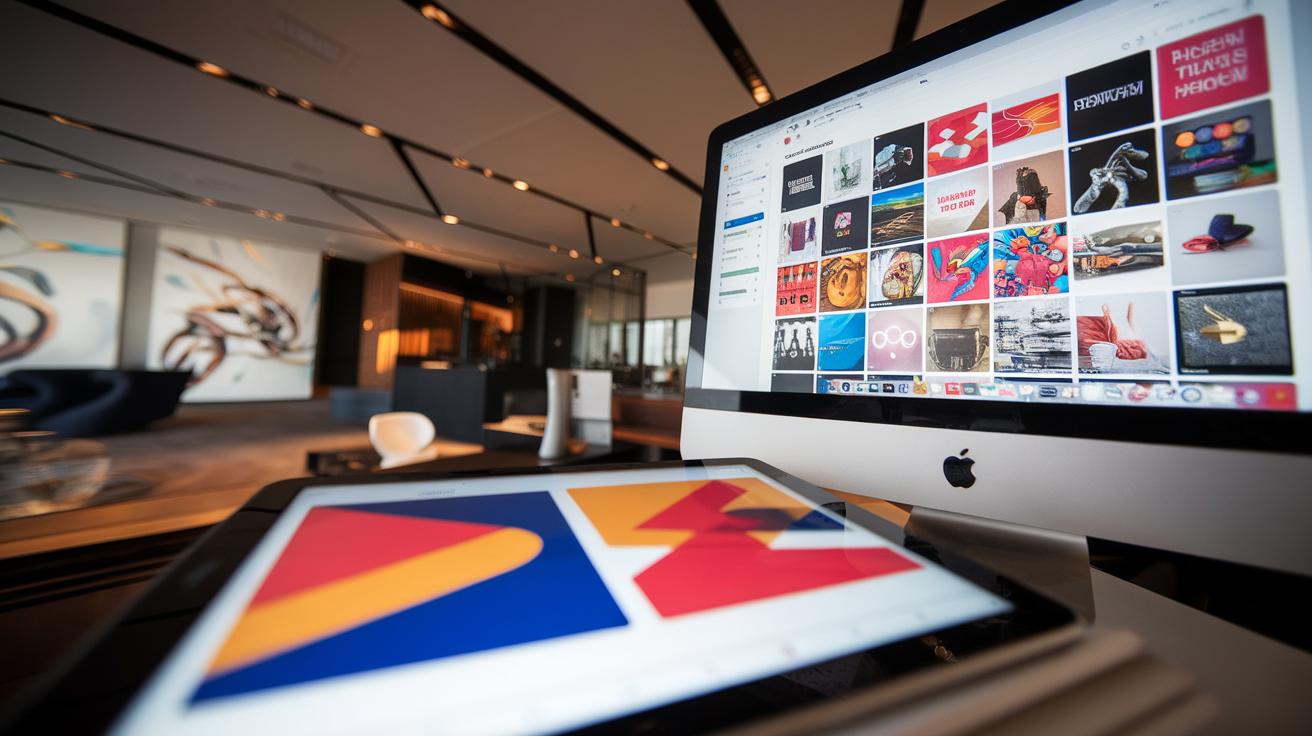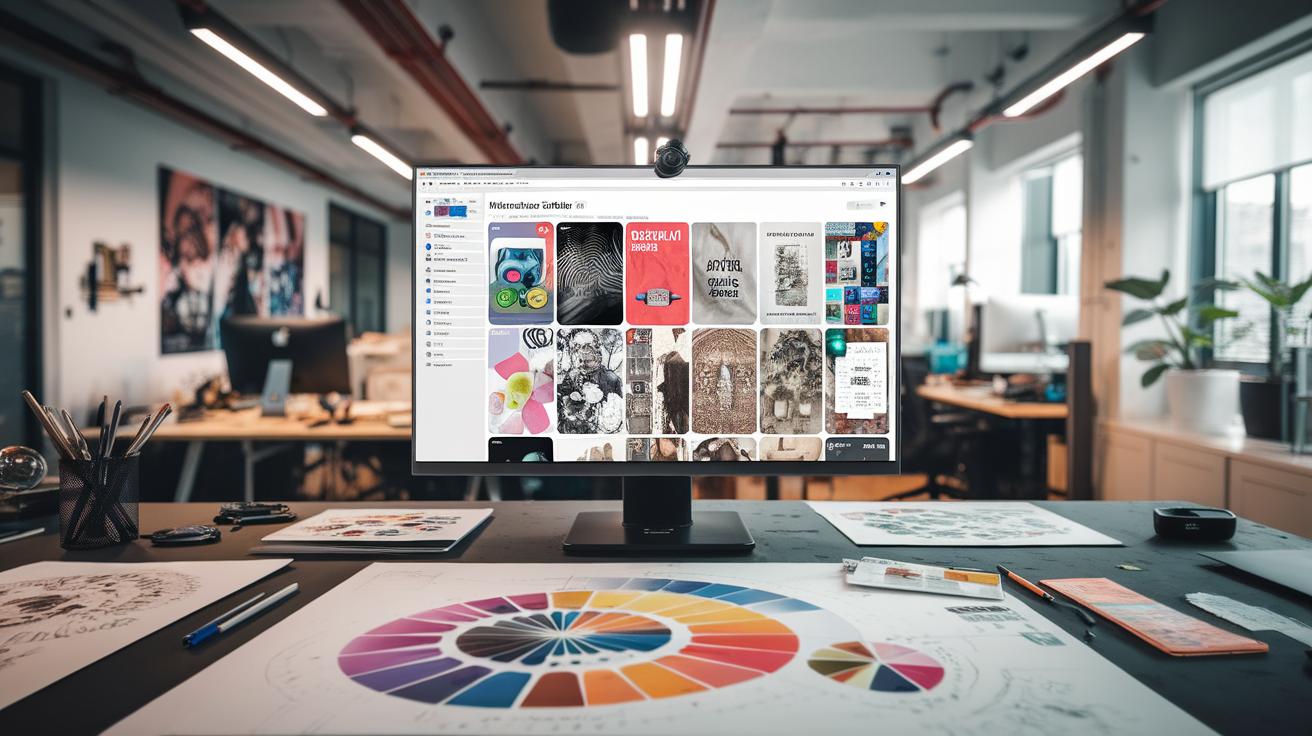Introduction
Pinterest has emerged as a vital platform in the world of visual marketing, facilitating not just creativity but also strategic promotion for brands. As a unique social media service, it allows users to publish and discover a diverse array of content, from fashion to home decor, captured in compelling visuals. Understanding how to leverage Pinterest effectively can elevate a brand’s visibility and foster meaningful engagement with target audiences. Today, the art of mastering Pinterest visuals is essential for marketers seeking to enhance their visual branding efforts.
From understanding your audience and defining your brand identity to employing effective pinning techniques, we will explore how these components work together to create a robust visual marketing strategy. By harnessing the full potential of Pinterest, businesses can turn their visual storytelling into a powerful tool, driving engagement and conversion like never before.
Understanding the Role of Visuals in Marketing
Significance of Visuals in Marketing
The integration of visuals in marketing strategies has become undeniably pivotal in shaping consumer behavior and brand perception. Research indicates that visuals are processed by the brain significantly faster than text, making them vital for capturing attention in a crowded marketplace. In fact, studies show that content accompanied by relevant images or videos tends to receive 94% more views than content without visuals. This immediate impact is essential for marketers looking to create a lasting impression on their audience.
Visuals don’t just grab attention; they also play a crucial role in conveying the brand’s message. They provide context, evoke emotions, and tell stories that resonate with potential customers. For instance, a well-crafted image can communicate the essence of a brand more effectively than words alone. This visual storytelling fosters a deeper connection with the audience, enhancing brand loyalty and trust.
Psychology Behind Visual Appeal
The psychology of visual appeal hinges on several factors, including color theory, composition, and familiarity. Different colors invoke specific emotions; for example, blue often signifies trust and calm, while red can invoke excitement or urgency. This emotional response can be leveraged to align a brand’s visual identity with the desired perceptions and behaviors of its target audience.
The composition of visuals significantly influences viewer engagement. Elements such as balance, contrast, and alignment can guide the viewer’s eye and highlight essential features or messages. Visuals that incorporate familiar symbols or culturally relevant imagery can foster instant recognition and positive associations with a brand, thereby enhancing retention and recall.
Retaining audience attention in an era characterized by rapid information dissemination is a challenge for marketers. Effective visuals can create a focal point that cuts through the noise. Infographics, for instance, capitalize on visual hierarchy to simplify complex information, making it easier for consumers to digest and remember. Ultimately, mastering the art of visuals equips marketers to navigate the intricacies of consumer psychology, fostering engagement and driving conversions. In a landscape where attention is finite, the ability to craft compelling visuals can be the differentiator between brand success and obscurity.
The Evolution of Pinterest as a Marketing Tool
Pinterest originated in 2010 as a simple virtual pinboard, allowing users to collect and share images that resonate with their interests. Over the years, it has transformed into a powerful platform for visual marketing, essential for brands looking to reach engaged audiences. The journey of Pinterest has been marked by key developments that have enhanced its functionality and appeal, making it a vital tool for businesses.
Pinterest was primarily a social sharing site, but its unique approach to visuals quickly caught the attention of marketers. Users began to explore not just images, but also the ideas and products behind them. This shift marked the beginning of Pinterest’s evolution into a visual search engine, combining social networking with e-commerce. The platform’s distinctive image-centric nature enabled brands to connect with audiences through compelling and visually appealing content, setting it apart from traditional social media platforms.
Pinterest’s unique features contribute significantly to its effectiveness as a marketing tool. The platform’s layout encourages discovery; images are organized in boards that make it easy for users to navigate and find inspiration. Additionally, the introduction of ‘Rich Pins’ allows businesses to include extra information directly on their Pins, such as pricing, availability, and descriptions. This feature not only enhances user experience but also aids in decision-making, driving qualified traffic to brand websites.
Another pivotal aspect of Pinterest is its audience. The platform attracts predominantly women, a demographic that heavily engages in lifestyle, fashion, and home décor niches. This has created an environment where brands can effectively communicate with an audience that values visual inspiration. Furthermore, the search functionality on Pinterest encourages long-term visibility for pins, as posts can resurface long after they are first pinned, offering brands the opportunity to reach users beyond the initial publication.
The introduction of video Pins has also played a significant role in increasing engagement on the platform. By integrating dynamic content, Pinterest caters to varying user preferences, proving that it is adaptable and continues to evolve in response to user behavior. This adaptability is critical in a landscape where consumer preferences shift frequently, giving brands a competitive edge in visual marketing.
Creating Compelling Visual Content Mastering Pinterest Visuals for Effective Branding and Engagement
Strategies for Creating Captivating Visuals on Pinterest
Visual content is the heartbeat of Pinterest, where eye-catching images hold the power to captivate and inspire users. To harness Pinterest’s potential in visual marketing, it’s essential to create compelling visuals that resonate deeply with your target audience. Here are some effective strategies in photography, graphic design, and styling that can elevate your visual content.
One of the foremost considerations in photography is lighting. Natural light is your best friend; it complements colors and adds vibrancy to your images. Aim for soft, diffused lighting during golden hours—early morning or late afternoon—for the best results. If you’re shooting indoors, position your subject near windows to harness this soft glow. Additionally, incorporating various angles can bring unique perspectives to your shots. Rather than sticking to a straight-on view, experiment with overhead, low-angle, or dynamic framing to make your images stand out.
Graphic design plays a vital role in enhancing visuals on Pinterest. Utilize tools like Canva or Adobe Spark to create visually appealing pins. Keep branding consistent across all your graphics; use a defined color palette and typography that aligns with your branding. This not only strengthens brand recognition but also helps create a cohesive visual narrative. Be mindful of the text overlay; opt for readable fonts and ensure that the text complements rather than overwhelms your imagery. Ensure to craft clear, concise, and engaging headlines that reflect the content’s value to pique curiosity.
Styling is another crucial aspect of producing captivating visuals. Organize your subject matter thoughtfully, considering the rule of thirds to create balanced compositions. Use props to tell a story or enhance the emotional appeal of your images. For example, if you’re showcasing a recipe, include the ingredients or utensils in the frame to create context. Aim for an aesthetic that reflects your brand’s personality—whether it’s minimalist, bohemian, or vibrant—with attention to detail in every shot. Also, remember to maintain an uncluttered backdrop to keep the audience’s focus on the main subject.
Successful visual content on Pinterest marries quality photography, sharp graphic design, and thoughtful styling. By mastering these elements, you can create visuals that not only grab attention but also foster engagement and drive meaningful interactions with your brand.
Optimizing Your Pins for Maximum Reach Key Strategies for Pinterest Success
SEO Techniques and Keyword Strategies for Pinterest
Maximizing your pins’ reach on Pinterest requires a well-thought-out optimization strategy. Visual appeal is vital, yet it is the underlying SEO techniques and keyword strategies that can significantly amplify your content’s visibility across the platform. By understanding the intricacies of Pinterest’s search algorithm, you can ensure your pins resonate with broader audiences.
Focus on keyword research specific to Pinterest. Utilize Pinterest’s search bar to identify trending terms and phrases relevant to your niche. As you type, note the autocomplete suggestions, which indicate popular searches. Additionally, checking out top pins in your category can reveal effective keywords currently engaging users. Compile a list of targeted keywords tailored to your audience and incorporate them naturally throughout your pins.
When creating your pin descriptions, integrate these keywords seamlessly while maintaining clarity and appeal. Aim for keyword placement in the first few lines of the description, as Pinterest’s algorithm prioritizes this information in its search results. Use a mix of broad phrases and specific, long-tail keywords to attract various search queries.
Another essential aspect of optimization is leveraging the alt-text feature. Description fields allow for the addition of alt-text for your visuals. Create concise, keyword-rich descriptions here, which enhance accessibility and improve SEO. This serves a dual purpose: supporting visually impaired users while generating relevant traffic through search.
Your boards also play a crucial role in pin optimization. Organize related pins into themed boards with keyword-optimized titles and descriptions. These descriptions should encapsulate what users can expect from the board’s content. Consider using board cover images that are visually appealing and entice users to explore further.
Utilizing hashtags also merits emphasis within your strategy. Incorporate 2 to 5 relevant hashtags within your pin descriptions. This allows users to discover your content through hashtag searches, significantly increasing discoverability.
Consistency in pinning is vital for maintaining engagement long-term. Regularly publish new content while repurposing older pins with updated descriptions or fresh designs. Use Pinterest’s scheduling tools or other social media management platforms to plan your content effectively, ensuring a constant presence in your audience’s feed.
By employing these SEO techniques and pinpointing the right keywords, you can optimize your pins to achieve maximum reach. This strategic approach not only enhances visibility but also boosts engagement, setting the stage for your successful branding and marketing efforts on Pinterest.
Engagement Techniques for Interactive Marketing Fostering User Interaction on Pinterest
Innovative Methods for User Engagement
Creating a vibrant community on Pinterest involves harnessing engaging and interactive content that invites users to participate actively. One of the most effective strategies for generating user interaction is through polls. Polls allow users to vote on topics, share their opinions, or choose between products, infusing a sense of involvement and excitement. For brands, this not only helps gauge customer preferences but also drives engagement rates significantly. When designing polls, ensure they are visually appealing and fit seamlessly into your brand narrative to maintain coherence and reinforce brand identity.
Another powerful approach is organizing contests that encourage creativity and participation. Contests can range from photo submissions related to a theme or a brand’s product to challenges that motivate users to create their own content. For instance, a baking company might have a contest inviting participants to share their best cake designs. These user-generated submissions become a treasure trove of authentic content that can be repurposed for future marketing efforts while also building a sense of community among engaged users.
User-Generated Content Strategies
User-generated content (UGC) is a goldmine for brands on Pinterest. Encouraging your followers to share their own visuals related to your products or services fosters authenticity and trust. To maximize UGC, establish clear guidelines outlining how users can share their visuals. Promoting a specific hashtag can help you easily track and curate these contributions. Highlighting UGC on your boards not only showcases customer satisfaction but also encourages others to engage, knowing their contributions might be showcased by your brand.
Incorporating stories and testimonials from real users can further deepen the connection with your audience. Pinning visuals combined with personal stories creates relatability and trust, enhancing user engagement. If users feel represented and valued by your brand, they are more likely to interact with your content, share their experiences, and advocate for your brand within their own networks.
The key to successful interactive marketing on Pinterest lies in fostering genuine connections through creative engagement techniques. By utilizing polls, contests, and user-generated content strategies, brands can transform passive viewers into active participants, driving both engagement and visibility in the Pinterest ecosystem.
Tracking Success and Adapting Strategies The Role of Analytics in Pinterest Marketing
Evaluating Effectiveness with Metrics
Pinterest marketing harness the effectiveness of your visual content and relies heavily on analytics. Tracking performance using tools provided by Pinterest is vital to understanding how your audience interacts with your pins. Key metrics, such as impressions, saves, clicks, and conversion rates, reveal invaluable insights into your content’s impact. Focusing on these metrics allows you to gauge not only how often your visuals are seen but also how they facilitate user engagement and drive traffic to your website.
Successful visual marketing requires continuous measurement and interpretation of these analytical indicators. For instance, if certain pin designs garner significantly higher engagement than others, it may indicate a preference for specific styles, colors, or themes. Insights into these interactions empower marketers to refine their strategies, focusing efforts on the types of visuals that resonate most with their target demographic.
Adapting Strategies for Enhanced Performance
Once you have sifted through the analytics, the next step is to adapt your visual strategies accordingly. A responsive approach is essential in a dynamic platform like Pinterest, where user preferences can shift rapidly. For example, if data reveals that video pins yield better results than static images, consider integrating more dynamic content into your boards. Similarly, experimenting with keywords and descriptions based on search trends can increase your visibility and engagement rates.
A/B testing plays a critical role in this adaptation process. By creating two versions of a pin with subtle differences, marketers can determine which performs better in terms of engagement and conversions. This method lends itself well to optimizing individual pins and campaigns, allowing for data-driven decision-making that aligns with audience behaviors.
Regularly revisiting your analytics provides a framework for ongoing optimization. The objective is not merely to track success but to ensure that your visual marketing strategies evolve in tandem with changing audience preferences and platform algorithms. By maintaining a keen eye on performance metrics and remaining agile, marketers can continuously enhance their Pinterest presence, ultimately leading to improved branding and higher engagement.
Conclusions
Mastering Pinterest visuals is not merely about creating attractive images but involves a strategic approach that encompasses various aspects of visual marketing. By understanding the platform’s dynamics and tailoring content to resonate with your audience, you can create a lasting impact. The techniques discussed throughout this article—from optimizing image formats to engaging content descriptions—are aimed at refining your visual strategy on Pinterest.
As the digital landscape continues to evolve, the importance of engaging visuals cannot be overstated. Brands that embrace the principles of visual marketing will find themselves at the forefront of their respective industries. By consistently leveraging Pinterest as an integral part of their marketing strategies, companies can foster stronger connections with their customers, drive traffic, and ultimately achieve their business goals.
















